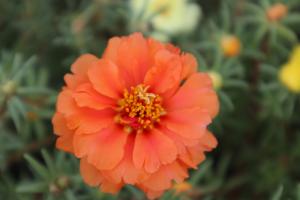Introduction
Potatoes are an important and nutritious vegetable that can be grown in your own garden. If you are looking for ways to make your potato plants grow more potatoes, there are several strategies you can use to boost your harvest. In this article, we will explore some of the best tips for ensuring healthy and productive potato plants.
Choose the Right Seed Potatoes
One of the most important factors in ensuring a good potato harvest is selecting the right seed potatoes. Seed potatoes are small potatoes that are used to grow new plants. When choosing seed potatoes, look for firm, smooth, disease-free potatoes that have at least one "eye" or sprout. Choose seed potatoes from a reliable source that specializes in certified disease-free seed potatoes.
Prepare the Soil
Another important factor in growing healthy potato plants is preparing the soil. Potatoes prefer well-draining, loose soil that is rich in organic matter, such as compost or well-rotted manure. Before planting, mix in some organic matter and make sure the soil is free from rocks or other debris that can hinder root growth. Keep the soil moist but not waterlogged or excessively dry.
Plant at the Right Time
When it comes to planting potatoes, timing is key. Plant your seed potatoes when the soil has warmed up to at least 45 degrees Fahrenheit (7 degrees Celsius) and all danger of frost has passed. In most areas, this will be in the spring, but you may need to adjust based on your climate. As a general rule, potatoes should be planted two to three weeks before the last expected frost date.
Care for Your Plants
To ensure your potato plants stay healthy and productive, you need to care for them properly. This includes watering them regularly, but not overwatering, and fertilizing them as needed. You can use a balanced fertilizer, such as one with a 10-10-10 ratio, to provide the necessary nutrients. As the plants grow, you will need to "hill" them, which means covering the stems with soil to promote the growth of new potatoes. Hilling should be done when the plants are around six inches tall and repeated every two to three weeks until the plants are fully mature.
Harvesting
Once your potato plants have matured and have started to flower, they are ready to be harvested. However, instead of digging up the entire plant, it is best to harvest them gradually by gently removing the soil from around the base of the plant and picking the potatoes. Be gentle so as not to damage the remaining potatoes. You can continue to harvest as needed until the plants start to die back, at which point you should harvest the rest of your potatoes.
Conclusion
Growing healthy and productive potato plants requires attention to several key factors, such as seed selection, soil preparation, timing, and care. By following these tips, you can ensure a bountiful harvest of delicious and nutritious homegrown potatoes.

 how many times do yo...
how many times do yo... how many planted tre...
how many planted tre... how many pine trees ...
how many pine trees ... how many pecan trees...
how many pecan trees... how many plants comp...
how many plants comp... how many plants can ...
how many plants can ... how many plants and ...
how many plants and ... how many pepper plan...
how many pepper plan...































